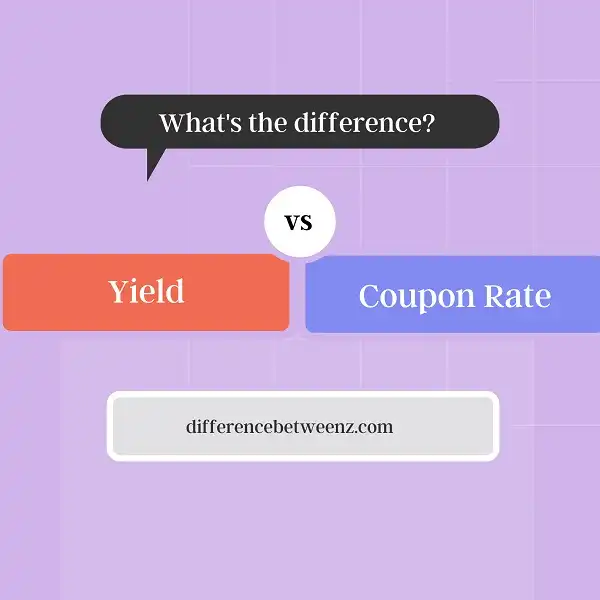When you’re investing in a bond, it’s important to understand the difference between the yield rate and the coupon rate. The yield rate is the annual return on your investment, while the coupon rate is the fixed interest payment that you receive each year. Understanding these concepts can help you make better decisions about how to invest your money.
What is Yield?
The yield rate is a term used in finance that refers to the annual return on investment. It is usually expressed as a percentage and can be calculated by taking the amount of money earned from the investment and dividing it by the initial investment. For example, if you invested $1,000 in stock and it increased in value by $100 over the course of one year, your yield rate would be 10%. The yield rate is often used when discussing bonds, which are typically seen as safe investments with relatively low returns. However, the yield rate can be affected by a number of factors, including inflation, market conditions, and the type of asset being purchased. As such, it is important to consider the yield rate when making any investment decision.
What is the Coupon Rate?
- The coupon rate is the stated interest rate on a bond. It’s the percentage of the face value of a bond that the issuer agrees to pay you each year.
- Here’s how it works:
- Let’s say you buy a bond with a face value of $1,000 that has a 5% coupon rate. This means that every year, you’ll get $50 in interest payments ($1,000 x 0.05 = $50).
- interest payments on a bond are income, which is why bonds are often referred to as “fixed-income” investments. The coupon rate is fixed, which means it doesn’t change over the life of the bond unless the issuer decides to call the bond (redeem it before it matures).
- Investors typically buy bonds because they’re looking for stability and predictable income. The coupon rate is one factor that helps them determine how much income a bond will generate. Other factors include the length of time until the bond matures and market conditions. For example, when interest rates rise, newly issued bonds will have higher coupon rates than existing bonds.
Difference between Yield Coupon Rate
Yield rate and coupon rate are two important financial terms that are often used when evaluating investments. The yield rate refers to the annual income generated by an investment, while the coupon rate describes the interest rate that is paid at regular intervals. In general, these two rates tend to be closely related, since an investment with a higher yield will also have a higher coupon rate. However, the relationship is not always straightforward, and there are some investments that may have a higher dividend yield without a correspondingly high coupon rate.
Conclusion
In order to understand the difference between a yield rate and a coupon rate, it’s important to first understand what these terms actually mean. The yield rate is the annual percentage of return on investment, while the coupon rate is simply the periodic interest payments (coupons) made on a bond or note. When you are looking at investments, it’s important to know which one offers you a higher return. However, it’s also important to consider other factors such as risk and liquidity.


